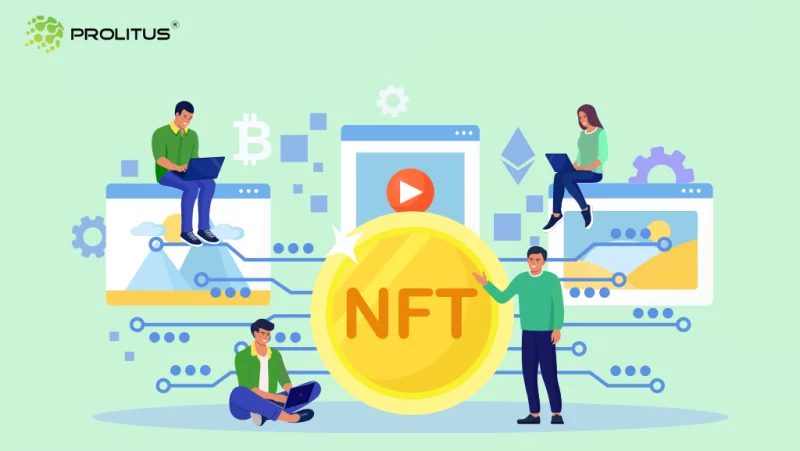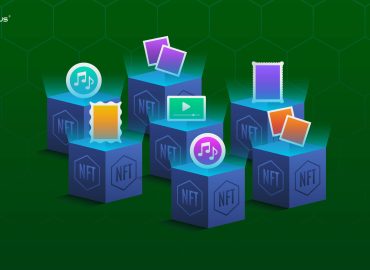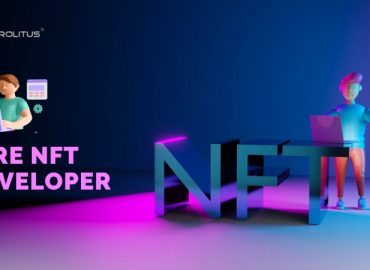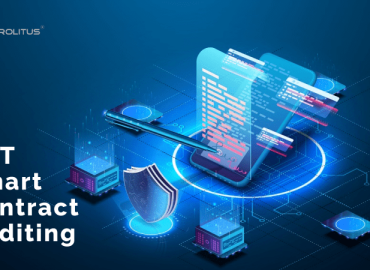NFTs have been around for a long time, as they made their debut back in 2012. But the trend and buzz around the NFTs have started in recent times after the success of the Bored Ape Yacht Club. Along with that, NFTs are also solving various drawbacks in the traditional industries, especially in the arts, music, and fashion spaces.
Ethereum was the first and one of the largest blockchains to support smart contracts and NFTs, but due to various drawbacks, it is losing its charm. Currently, blockchains like Cardano, Flow, Avalanche, and many others are attracting NFT creators because of their unique features. And among these, Cardano is getting the most attention as it is one of the largest environmentally friendly, decentralized, and highly sustainable blockchain networks.
Thus, in this piece of writing, we will cover everything and anything around the creation of NFTs on the Cardano blockchain. So let’s get started.
What is a Cardano Blockchain?
Cardano is a third-generation distributed blockchain platform that works on a proof-of-stake (PoS) consensus mechanism. It was founded by Charles Hoskinson, one of the co-founders of Ethereum, back in 2015. The main aim behind the foundation of Cardano was to improve upon the functionalities of Ethereum. Thus, it is also known as the “Ethereum Killer” by many of its supporters.
Along with that, Cardano is also successful in overcoming the environmental concerns voiced by the critics. And it is possible due to the underlying PoS consensus mechanism, which it employs compared to the PoW consensus mechanism used by Bitcoin and Ethereum. In addition, Cardano also offers better scalability and sustainability.
What are Cardano NFTs?
Before we discuss Cardano NFTs, let’s quickly understand NFTs in general.
NFTs, also known as Non-Fungible Tokens, are digital assets that are unique and provide exclusive ownership over the assets. These digital assets can be anything ranging from tweets, music, drawings, and video clips to game wearables.
Now let’s move to Cardano NFTs.
Cardano NFTs are a kind of NFT that can be minted on the blockchain itself. Thus, they can be treated like any other token on the blockchain. Along with that, there are various features of Cardano NFTs that make Cardano home to more than 5 million digital assets. This is also one of the main reasons why Cardano has seen a spike in its value and is able to attract a lot of eyes in the NFT space.
What are the unique features of Cardano NFTs?
There are various amazing features of Cardano NFTs, but in this section, we will go through some of the unique ones.
1) There is no requirement for smart contracts to create Cardano NFTs.
One of the most significant advantages of Cardano NFTs is that there is no requirement for smart contracts. Thus, this makes Cardano NFTs much easier to create and deploy compared to other networks.
In addition to this, as smart contracts are eliminated, a lot of the associated costs are also saved, making Cardano NFTs cheaper. Unlike other networks, where smart contracts add a lot to the cost of making NFTs, NFTs don’t have to deal with that.
2) Minimum charges
The Cardano network only charges the minimal price for assets that are traded across the Settlement Layer, which as of right now, is approximately 0.2 ADA per transaction. The primary reason for this is that no smart contract needs to be deployed for the transaction.
So, only the basic fee will be assessed when transferring a Cardano NFT between two distinct wallets.
Here it should be noted that Cardano’s blockchain can be divided into two layers:
Settlement Layer
Computational LayerSettlement Layer
3) Direct connection between a token and blockchain metadata
In order to link the blockchain metadata to the token of NFTs, other protocols use an external storage source like Arweave, IPFS, etc. But on Cardano, the tokens are an integral element of the blockchain. Thus, the transaction includes the blockchain metadata as if the blockchain metadata is a part of it.
In this manner, a token and the blockchain metadata can be linked directly and inextricably. This makes it possible for the Cardano network to protect the data contained in the blockchain metadata. Along with that, it also provides an easy way to verify it if required in the future.
Step-by-step guide for creating NFTs on Cardano
Before we go through the steps involved in creating NFTs on Cardano, there are particular prerequisites which we will discuss. You will need:
- Ownership of a full Cardano node
- Basic understanding of Cardano CLI and associated lingo
- An ADA wallet containing at least 2 ADAs
Now we will go through the steps that you need to follow in order to create NFTs on Cardano.
Step 1: Create payment address keys
This is the first step in which you will need to generate two payment address keys, i.e., signing and verification keys.
Step 2: Establish a payment address.
After the creation of the payment address keys, you will need to create a payment address.
Step 3: Display the content of the file
Now that you have generated the payment address, you will need to read the contents of the payment address file.
Step 4: Verify the current UTXO
After seeing the contents of the payment address file, now verify the address of the current UTXO.
Step 5: Make a payment to the payment address.
There won’t be any ADA present as you have created a new payment address. So you will need to fund the payment address by adding the desired number of ADAs you want.
Note that here you will need to keep in mind that you transfer enough ADAs. So that you can create the desired number of NFTs you want and also transfer them to another wallet in case you need that.
Step 6: Double-check UTXO.
After transferring the funds again, check the address of UTXO, and this time, the payment will be reflected.
Step 7: Export the current parameters
Now that you have checked the UTXO, export the current network parameters to a file.
Step 8: Make a policy.
After exporting the current network parameters, you must now create a policy. A policy is used to burn and generate tokens. You should always use the policy ID and token name to identify a token. But it should be noted that the token name can be used with several policy IDs even though it is unique to the policy ID.
Step 9: Calculate the transaction fee
After creating the policy, it’s now time to calculate the transaction fees.
Step 10: Build the transaction
As the transaction fee is calculated, now build the transaction with the fees.
Step 11: Sign the transaction and submit it
At this step, you must initially sign the transaction that you have created. And after that, submit the transaction.
Step 12: Enquire UTXO
Finally, query UTXO, and the newly issued token will be displayed.
How can Prolitus help you with NFT creation?
We at Prolitus are a leading blockchain development company in the crypto space. We are committed to offering the most sophisticated and reliable NFT development services in the industry. We have a team that comes with enriched experience and expertise in the field of NFT development. Our highly skilled blockchain developers can also help you create NFTs on Cardano based on your business objectives.
Still thinking about what to do?
Just contact us, and let our experts handle all your doubts.
Conclusion
From the above discussion, it is clear that Cardano NFTs have various unique features compared to other networks. Although the Cardano network is still young, it will need to prove its use case in the long run. But it is also undeniable that it has a lot of room to develop and can eventually overtake all other NFT networks.
So, if you are also thinking of creating NFTs, then it is the right time to enter the market and grab this golden opportunity. With the development and adoption of blockchain technology, there is no doubt that NFTs will also continue to increase their use cases.
Thus, don’t wait and quickly get in touch with Prolitus to create NFTs on Cardano.
FAQs
Below are some of the most frequently asked questions regarding the creation of NFTs on Cardano. So let’s have a look at them.
Q1: What happens to unsold NFTs on Cardano?
Answer: It depends on the policy ID. If the policy ID is open, then you can still sell the NFTs. But if the Policy ID is closed, then the NFTs will act as simple files on IPFS nodes and NMKR Studio servers.
Q2: How to ensure that only one unique token is minted for Cardano NFTs?
Answer: When you are creating a project, simply set the maximum supply to 1 to ensure that only one unique token is minted. By the way, it is a default setting, so there is no need to worry about it.
Q3: What technical skills are required for creating NFTs on Cardano?
Answer: At a minimum, the two most prominent technical skills required for creating NFTs on Cardano are:
Web designingJSON for blockchain metadata
You can directly contact Prolitus as we have best-in-class industry experts to manage all the technical requirements.





